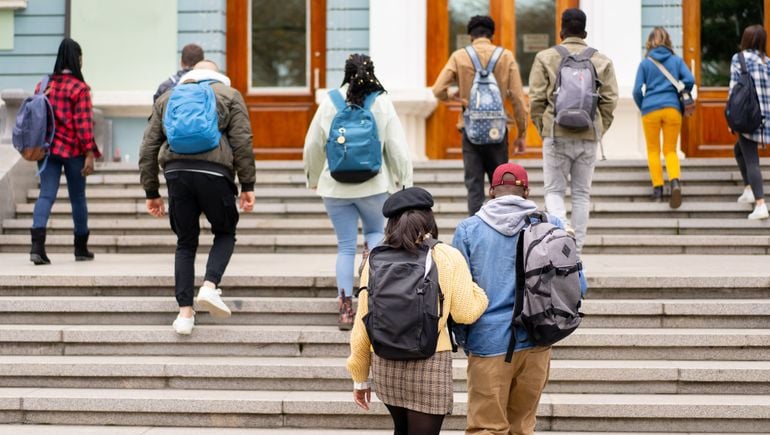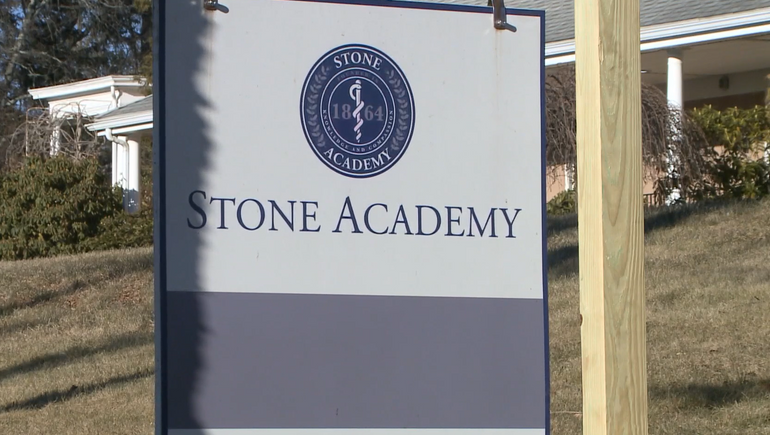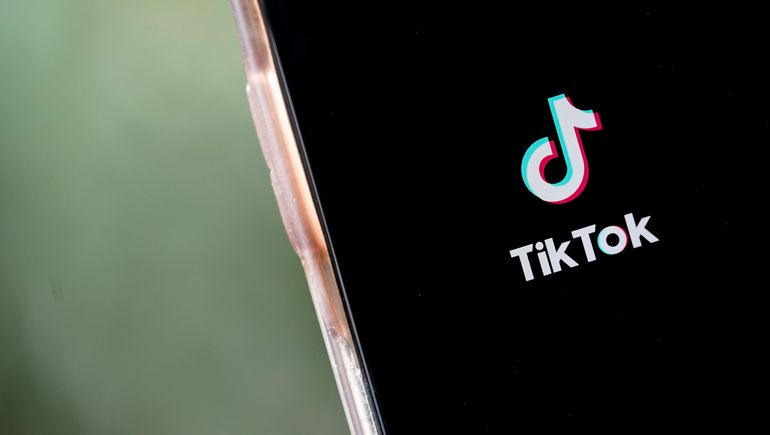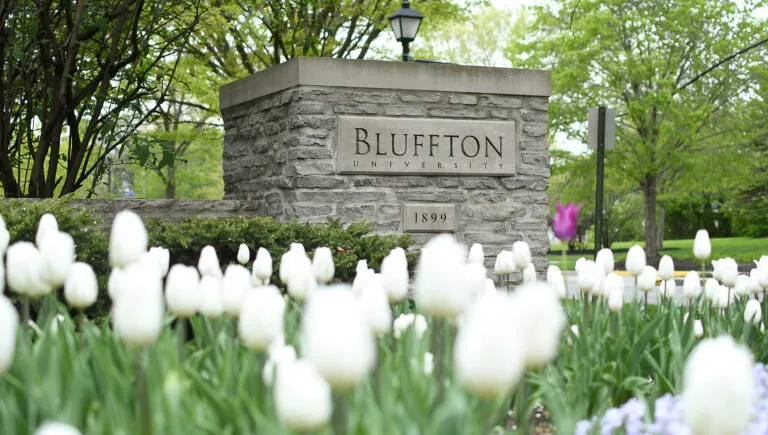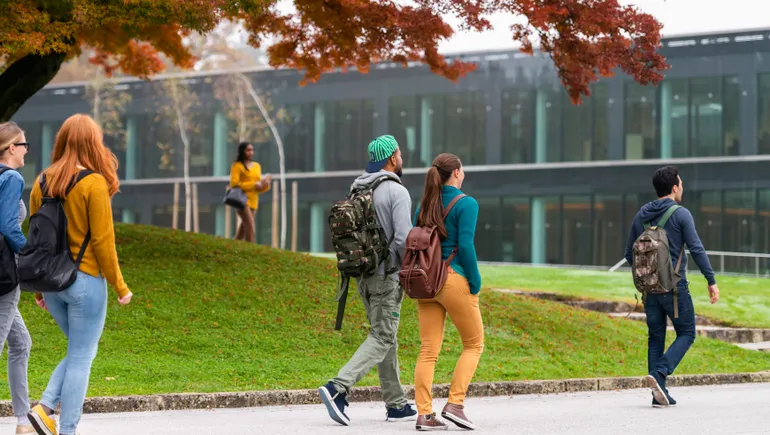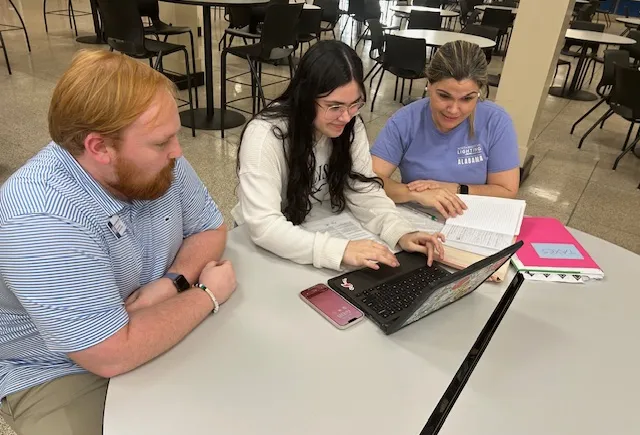[ad_1]
Scrutiny over selective college enrollment has increased in recent years in the wake of high profile university scandals and the U.S. Supreme Court’s recent ruling against race-conscious admissions.
But the majority of students in the U.S. don’t attend highly selective colleges. In many cases, the more prevalent admissions issue is convincing students to pursue higher education at all.
Some higher education experts point to direct admissions as one potential solution to that problem. The practice — where institutions automatically accept students based on data like their GPAs — has slowly been gaining ground.
Advocates for the policy say it can boost students’ confidence and help them understand they are college material. Results are generally positive, although a bit mixed depending on the policy design.
Direct admissions programs can take a few different forms. Typically, officials notify eligible high school students that they have been automatically accepted to institutions based on their existing grades. Students can then indicate where they would like to enroll, or apply to other colleges.
“We see direct admissions as moving more people toward going to college and increasing the likelihood that they engage with those institutions,” said Taylor Odle, an education policy professor at the University of Wisconsin at Madison who has studied direct admissions policies.
Where are direct admissions policies prevalent?
Idaho, Minnesota and Hawai’i all have statewide direct admissions programs for their public institutions. Earlier this year, the State University of New York system launched its own program by informing some 125,000 graduating high school students that they had been admitted to their local community colleges.
Sara Scudder is a college and career access officer at Idaho’s Office of the State Board of Education. Scudder said that the goal of the state’s direct admissions program — called Next Steps Idaho — was to promote a college-going culture.
Idaho became the first to pioneer statewide direct admissions in 2015, with a program that included both two- and four-year colleges. The model accounts for high school students’ standardized test scores, GPAs and class credits to admit them to participating state institutions, including Boise State University and the University of Idaho.
“The kids just feel this sort of relief,” Scudder said. “They know they’ve been admitted and now it’s just a matter of, ‘Which one do I want to go to?’”
The program has successfully reversed declining postsecondary enrollment and reduced the number of students leaving the state to attend college, Scudder said.
One analysis found enrollment across the state’s two- and four-year colleges increased 3.1% in 2016 compared to the year before, when the direct admissions policy launched. Researchers also found average undergraduate enrollment increased by around 11% at the institutional level following the change.
A study co-authored by Odle compared results in Idaho to a control group of similar institutions that didn’t undertake direct admissions initiatives. By comparing these groups, researchers found that Idaho increased first-time enrollment at participating institutions by 4% to 8% and in-state enrollment by 8% to 15%.
Most of the student growth was concentrated in two-year institutions with open enrollment.
However the study did not show that Idaho’s direct admissions effort increased enrollment of students who were awarded federal Pell Grants compared to the control group.
Idaho’s program has been relatively inexpensive and easy to maintain. It requires an annual budget of $30,000 per year, most of which is spent on designing and sending the letters to students.
Existing staff handle other efforts for the initiative, such as talking to colleges, Scudder said.
Idaho’s education board oversees the direct admissions program. The program is fairly nimble, as legislative action is not needed to make changes, and the office already has jurisdiction over high school data. In other states, memorandums between state agencies and more funding may be required to administer a similar program.
“I probably on a weekly basis talk to an entity or a state that’s wanting to find out more about our program,” Scudder said. “Each state that has been coming out with a direct admissions program has modeled it on their own state climate.”
The Common App, a nonprofit organization that allows students to apply to hundreds of institutions through a single portal, has also been experimenting with direct admissions since 2021, including with private institutions.
After several pilot programs, the organization announced this month a new initiative with 70 participating public and private colleges.
Those institutions will set admissions parameters, including minimum GPAs for students in their states. Meanwhile, the Common App will find qualified low- and middle-income and first-generation students using data they have entered on their college applications.
Students can then apply without a fee and are guaranteed to get in.
J.T. Smith is dean of admissions at Regis University in Colorado, one of the institutions participating in the Common App program. He said that he is hopeful that the initiative will help increase enrollment of lower-income Colorado students at the Jesuit Catholic institution.
Regis saw enrollment decline over the past decade, as many institutions did, and has room for more first-year students.
Between 2012 and 2022, fall undergraduate enrollment fell 57.8% to just under 2,400 students, according to federal data. Currently, the university has about 500 first-year students and about 1,800 full-time on-campus undergraduates.
Last year, more than half of Regis’ incoming students were Pell-eligible.
“We want to reach out to as many students as we can to let them know that they are not only wanted, but they are welcome here at Regis University,” Smith said.
The institution plans to assign one admissions team member to all of the new applicants through the initiative. Accepted students will receive a merit scholarship of $30,000 per year. The average financial aid for a first-year student is a bit over $39,000, according to the Regis website.
Does direct admissions work?
The Common App piloted its direct admissions program beginning in 2021.
An August working paper co-authored by Odle reviewed the Common App’s second round of the program. It found about 3% of students who received admission offers through the program applied, roughly double the share of those who didn’t.
Students who received an offer were also more likely to apply to any college at all. Those impacts were greater for students from underrepresented groups.
But the pilots didn’t change the likelihood that students would enroll in college. Part of that, Odle said, is because students who fill out the Common App are already more likely than their peers to go to college. It would be difficult to boost their enrollment rates, Odle said.
Money also may play a role.
Students still need to fill out applications for federal financial aid and pay for college.
Odle said direct admissions is most effective when paired with other equity-boosting measures, such as student supports. For instance, pairing direct admissions offers with financial aid offers could increase students’ likelihood of attendance.
Overall, policy design should focus on simplifying the process and breaking down knowledge barriers for students, Odle said. Anything that adds requirements, like the creation of a portfolio, can make things even more complicated for students.
“You’re not going to adopt a direct admissions policy, which is remarkably cheap, and then just see these huge increases in enrollment,” Odle said. “Because there are other very real barriers that are in students’ way.”
[ad_2]

